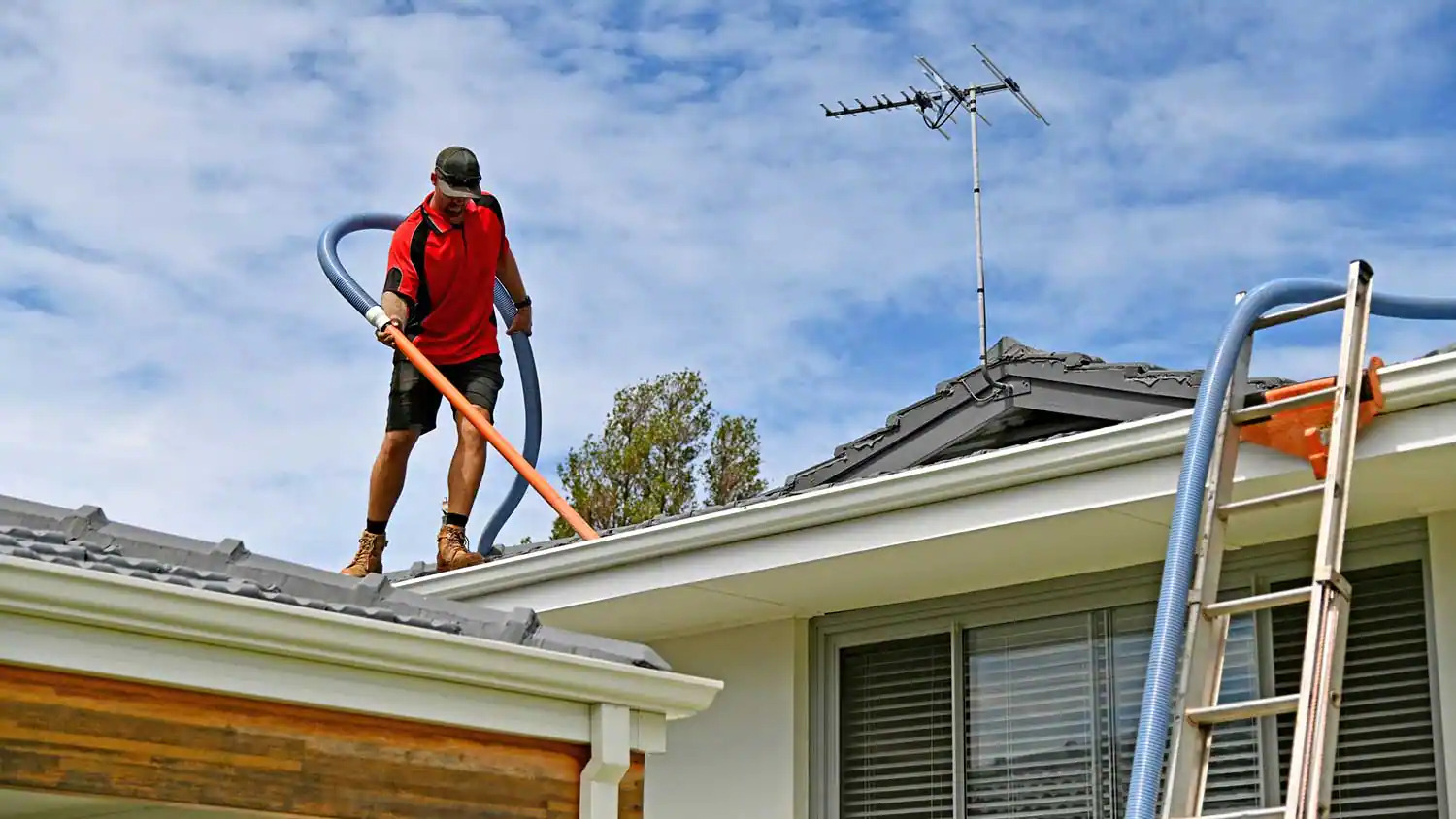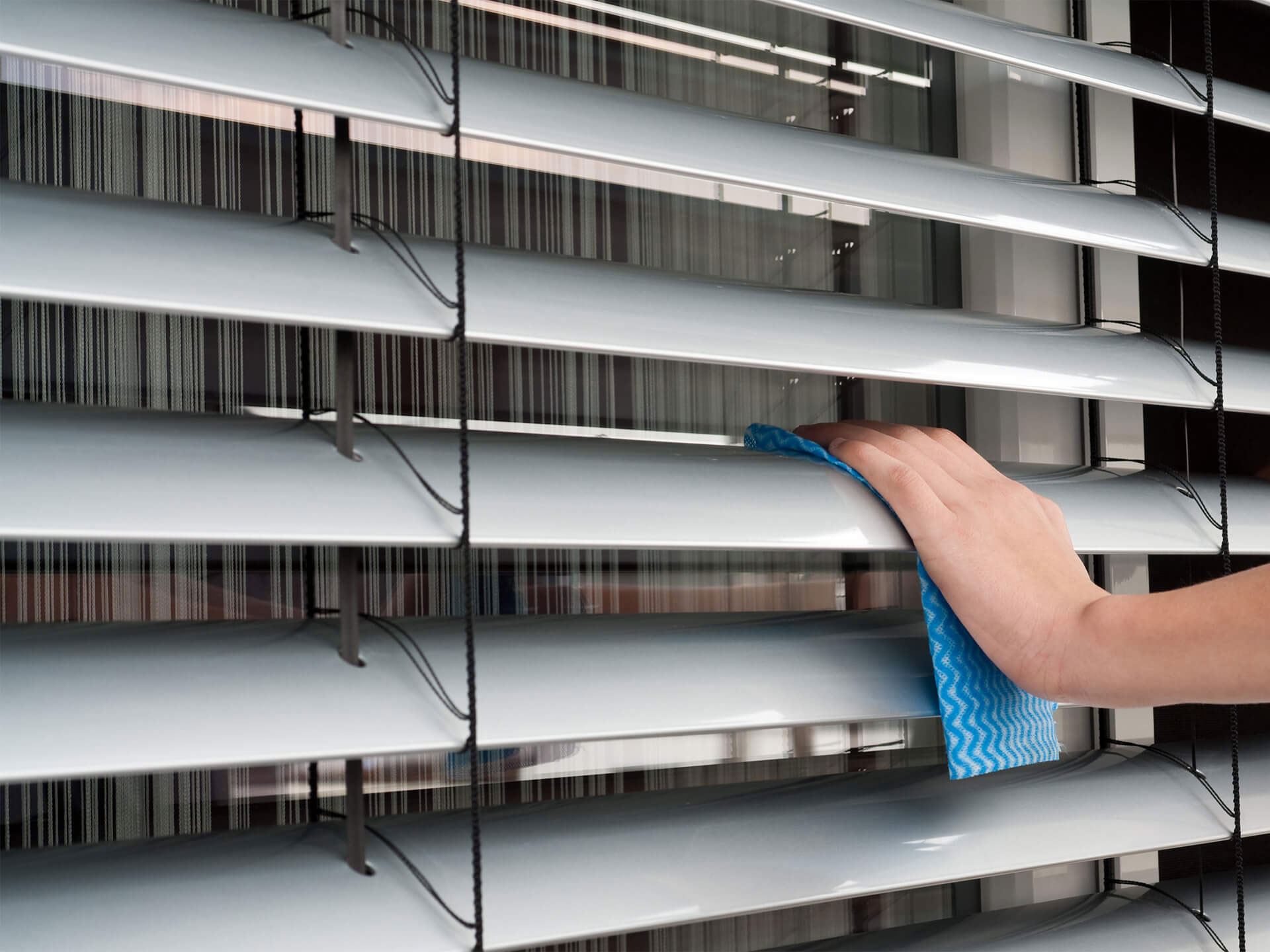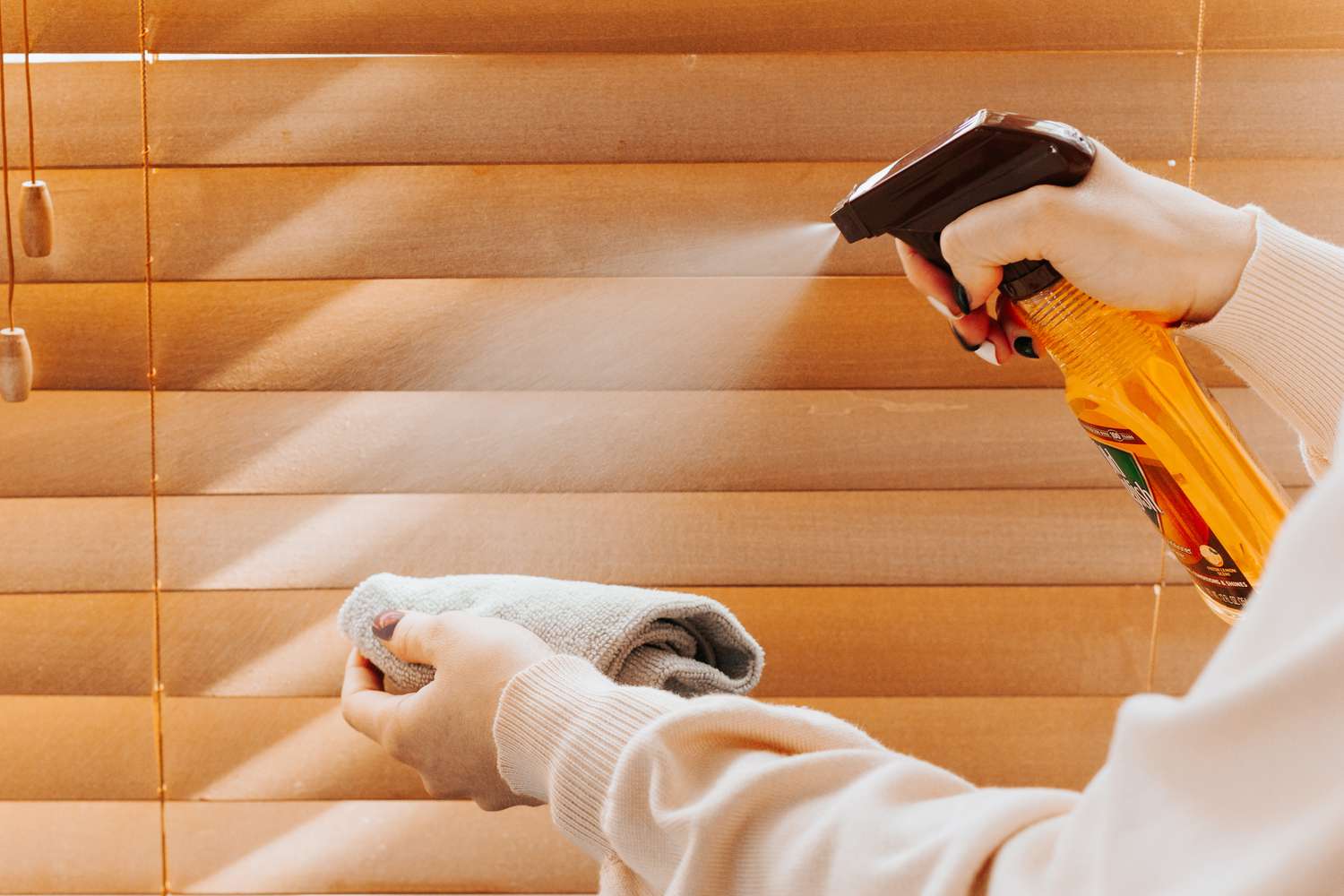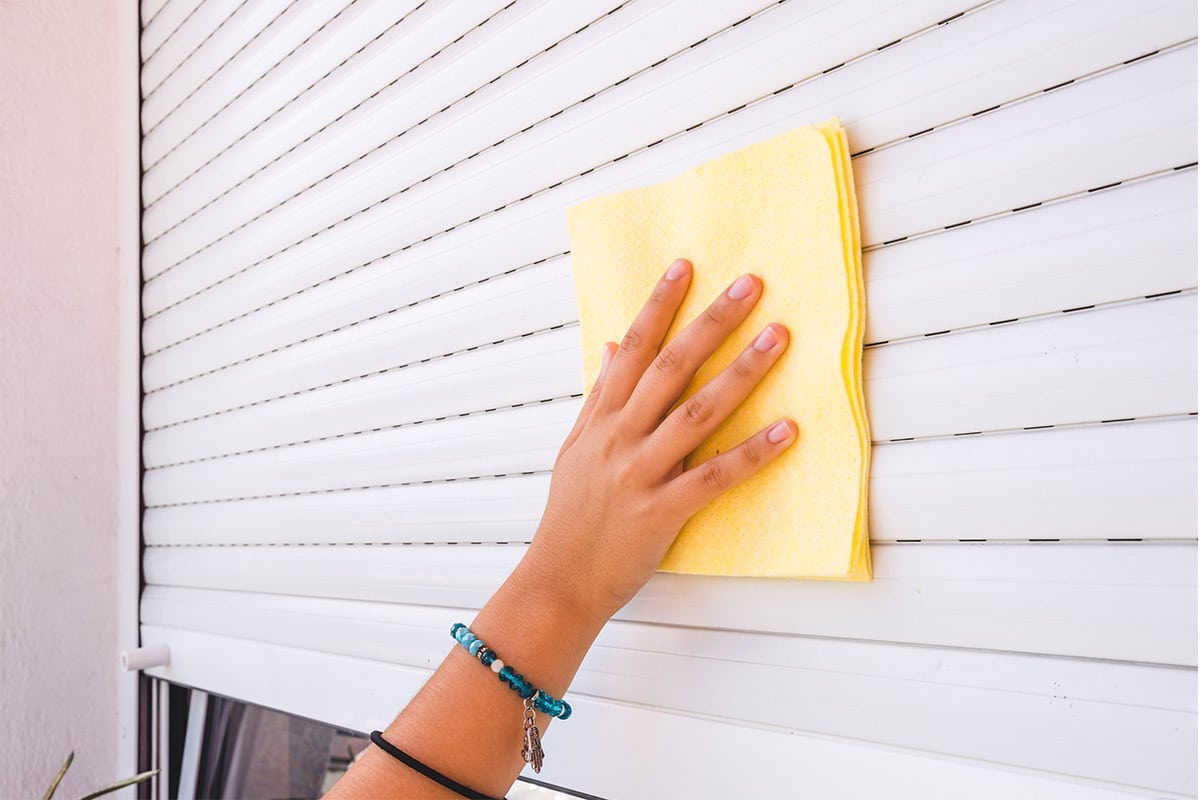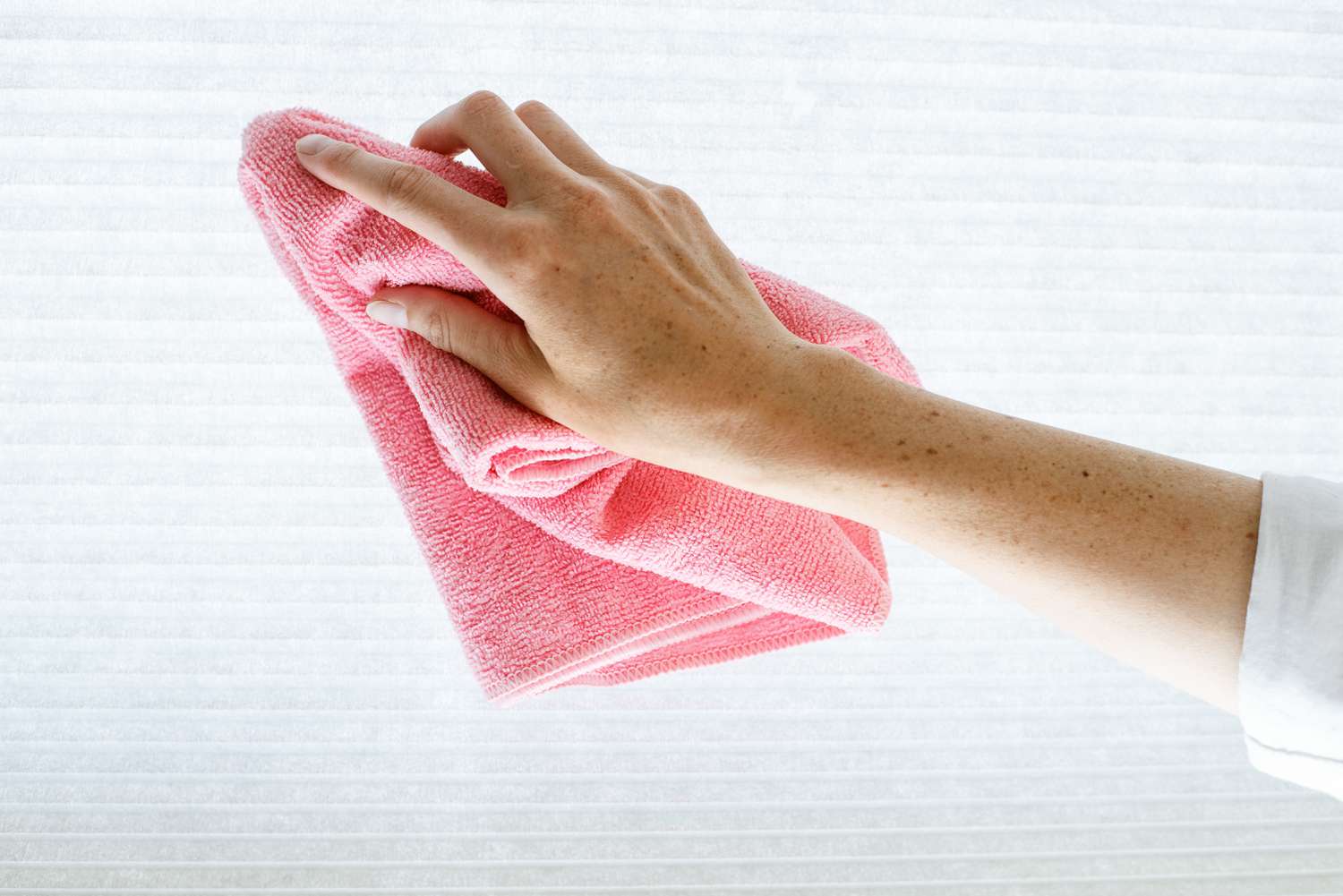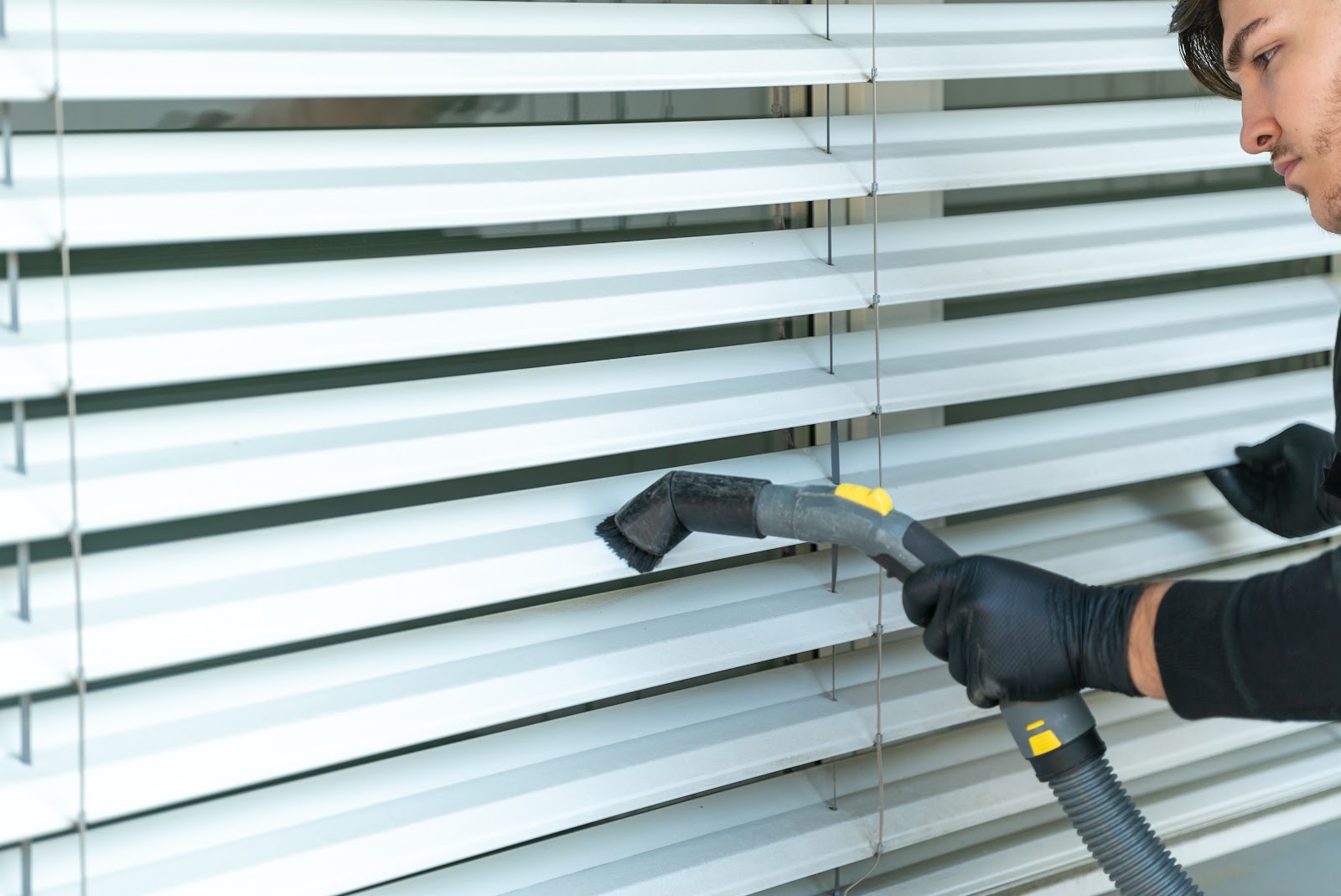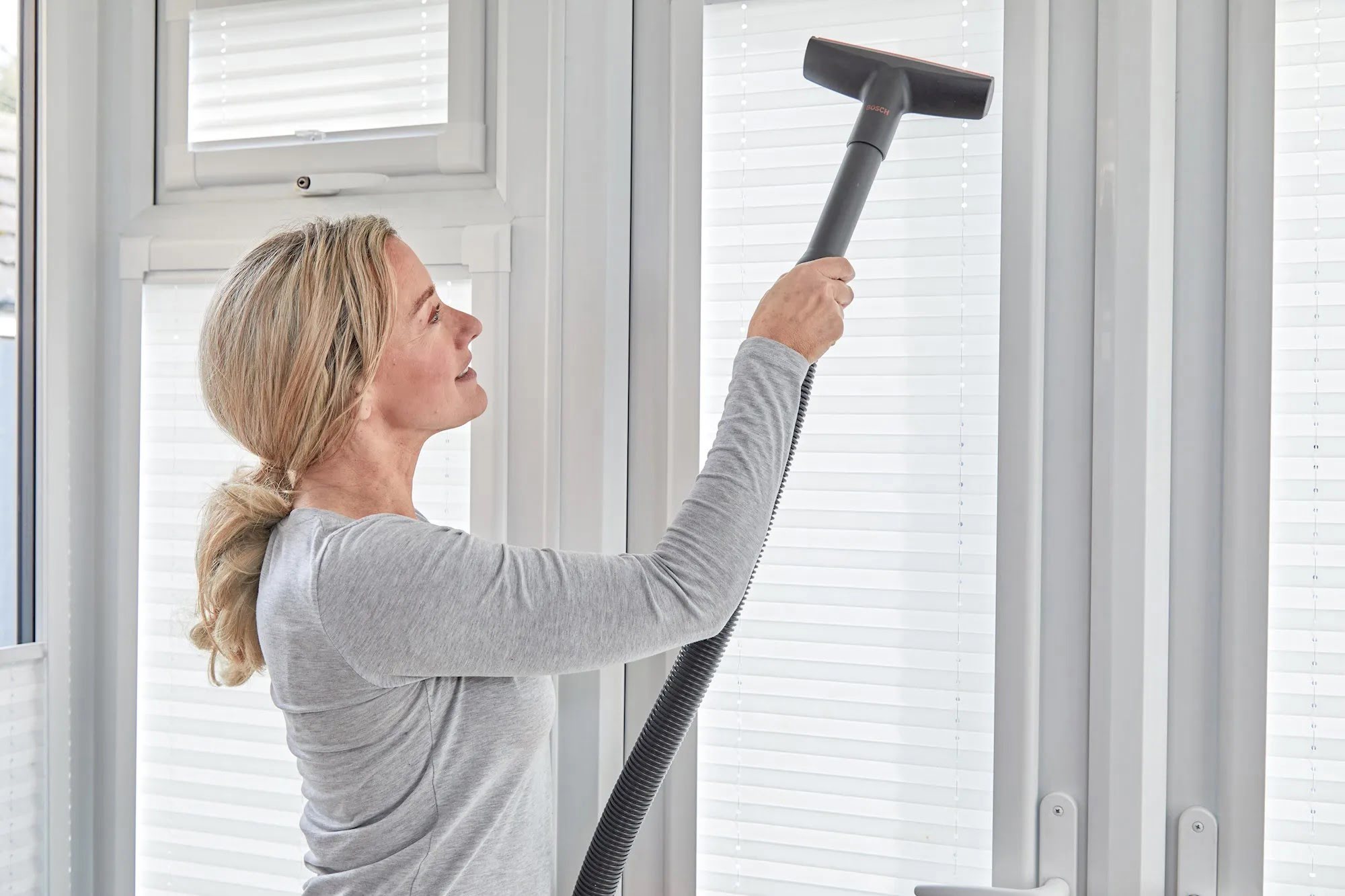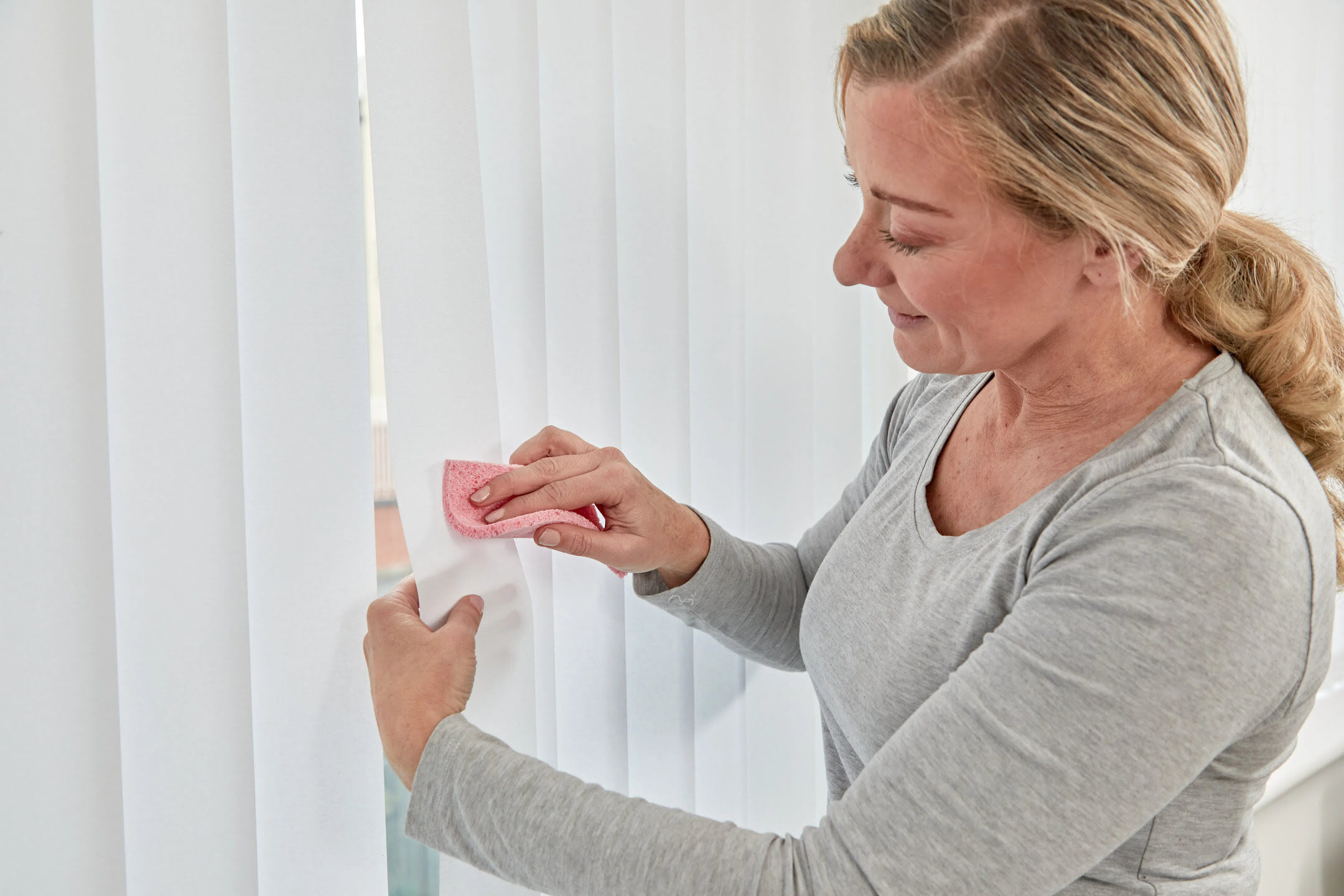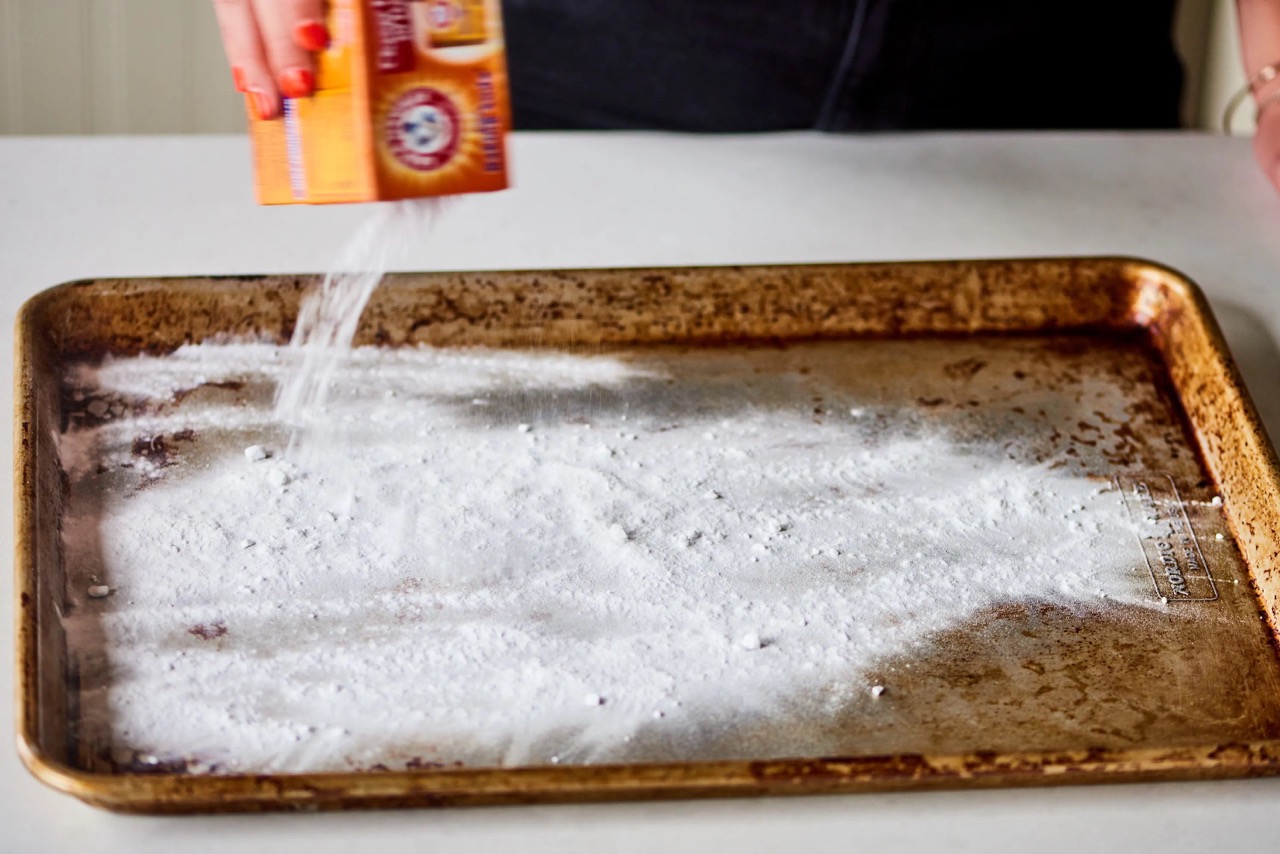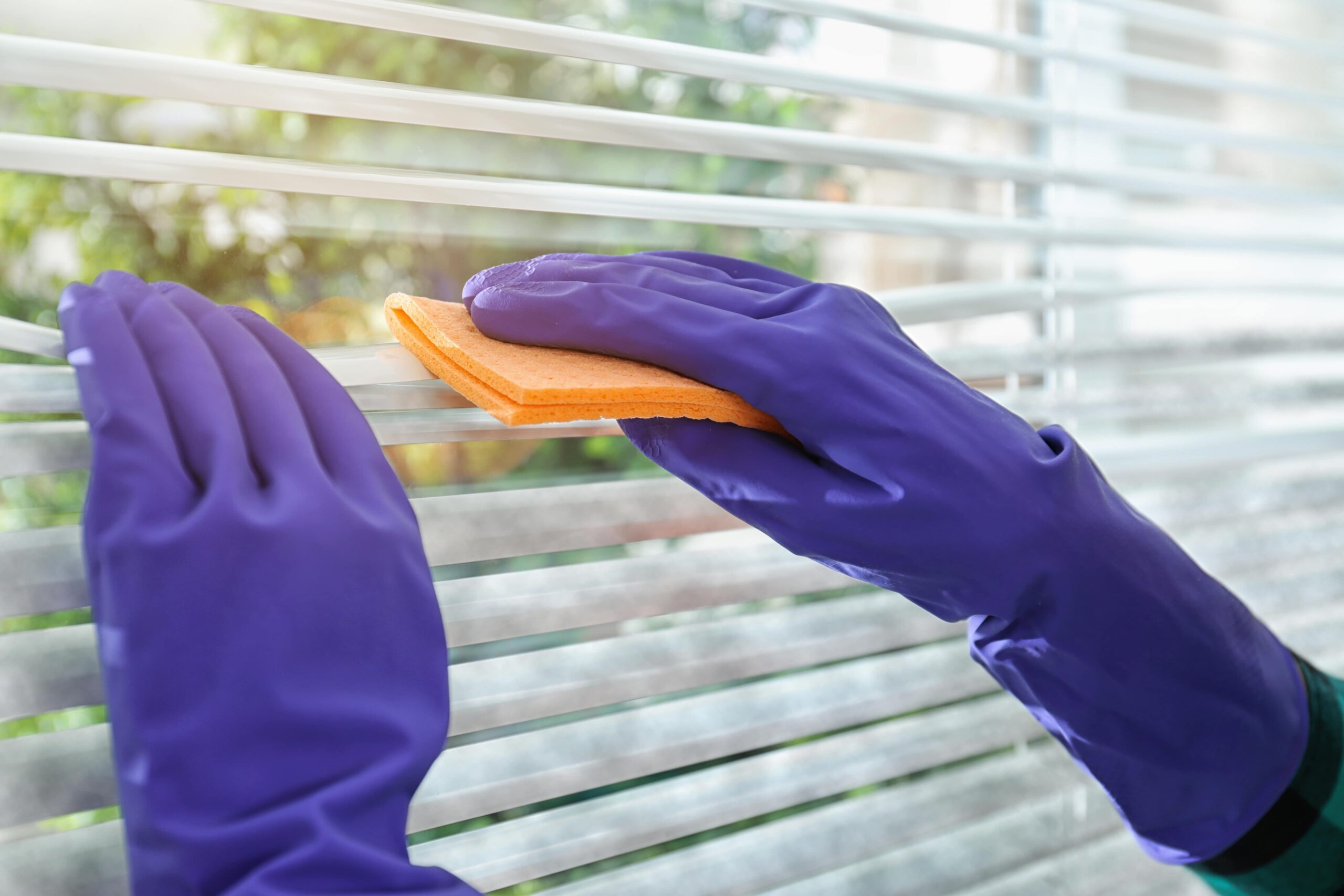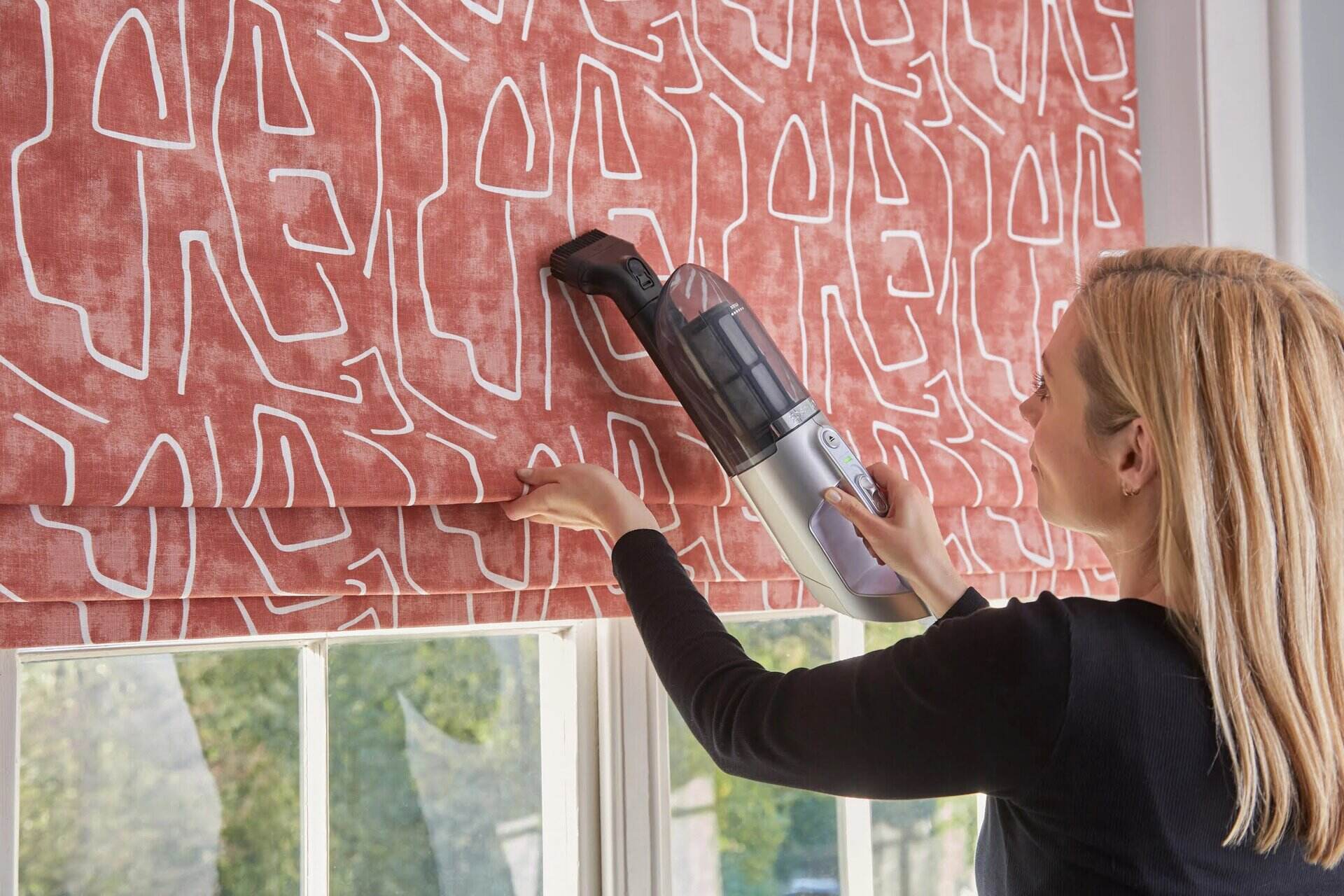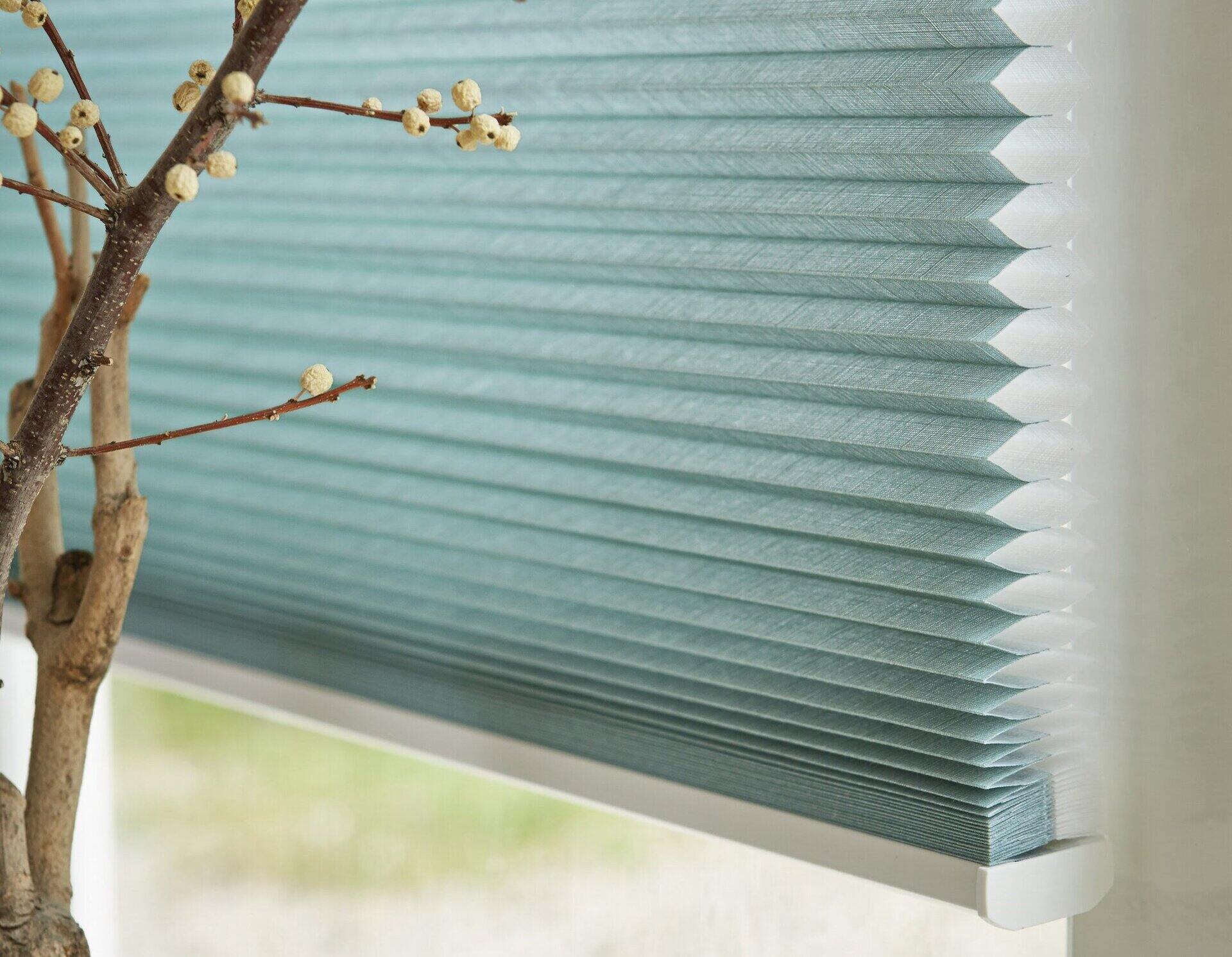

Articles
How Do Professionals Clean Blinds
Modified: January 23, 2024
Discover the expert techniques and tools used in professional blind cleaning with our comprehensive articles. Keep your blinds looking fresh and clean all year round.
(Many of the links in this article redirect to a specific reviewed product. Your purchase of these products through affiliate links helps to generate commission for Storables.com, at no extra cost. Learn more)
Introduction
Clean, well-maintained blinds not only enhance the aesthetic appeal of a space but also contribute to a healthier and more comfortable living or working environment. However, cleaning blinds can be a challenging and time-consuming task if you don’t have the right techniques and tools.
In this article, we will explore how professionals clean blinds and provide you with practical tips to help you achieve professional-level results. Whether you have horizontal, vertical, or fabric blinds, we’ve got you covered.
Before we dive into the cleaning process, let’s first take a look at the tools and equipment you will need to have on hand.
Key Takeaways:
- Professional cleaning of blinds requires the right tools and techniques for each type. From dusting to spot cleaning, proper maintenance ensures longevity and a fresh, inviting atmosphere in any space.
- Stubborn stains and grime on blinds can be effectively removed with vinegar solutions, baking soda paste, or blind-specific cleaners. Regular dusting and gentle handling are key to maintaining clean blinds and preserving their beauty.
Read more: How Do You Clean Honeycomb Blinds
Tools and Equipment Needed
Before you begin cleaning your blinds, make sure you have the following tools and equipment ready:
- Duster or microfiber cloth: A duster or microfiber cloth is essential for removing dust and loose debris from the blinds.
- Vacuum cleaner with brush attachment: A vacuum cleaner with a brush attachment can be helpful for thorough dust removal, especially for fabric blinds.
- Bucket: A bucket will come in handy for preparing cleaning solutions and rinsing the blinds.
- Mild detergent or blind cleaner: Choose a mild detergent or specially formulated blind cleaner that is safe to use on your specific type of blinds.
- Gentle brush or sponge: Depending on the material of your blinds, you may need a gentle brush or sponge to effectively clean the slats.
- Rubber gloves: Protect your hands with rubber gloves to prevent skin irritation from cleaning solutions or abrasive materials.
- Ladder or step stool: If your blinds are out of reach, a ladder or step stool will be necessary to safely access and clean them.
- Towels or drying rack: Set aside some towels or use a drying rack to air dry your blinds after cleaning.
Having these tools and equipment ready will ensure that you can clean your blinds efficiently and effectively.
Preparing the Blinds for Cleaning
Before you start cleaning your blinds, it’s important to prepare them properly to ensure a thorough and effective cleaning process. Here are the steps to follow:
- Close the blinds: Close your blinds completely to provide a flat surface for cleaning.
- Remove any loose debris: Use a duster or microfiber cloth to gently remove any dust or loose debris from the blinds. Start from the top and work your way down, ensuring you cover all the slats.
- Spot clean any stains: If you notice any stubborn stains or spots on the blinds, use a mild detergent or stain remover specifically designed for your type of blinds to spot clean them. Follow the manufacturer’s instructions on the product for best results.
- Identify any damaged areas: While preparing your blinds, keep an eye out for any damaged or broken parts such as broken slats, missing clips, or frayed cords. Make a note of these areas and address them during the cleaning process or consider repairs or replacements.
- Take safety precautions: If you’re working with tall or hard-to-reach blinds, use a sturdy ladder or step stool to safely access them. Ensure the ladder or step stool is stable and secure before climbing up.
By properly preparing your blinds before cleaning, you’ll create a clean and suitable surface for a deeper cleaning process. Now, let’s explore how to clean different types of blinds effectively.
Cleaning Horizontal Blinds
Horizontal blinds, also known as Venetian blinds, are a popular choice for many households and offices due to their versatile design and functionality. Here’s a step-by-step guide on how to clean horizontal blinds:
- Closed position: Close the blinds completely in the downward position to make it easier to clean each individual slat.
- Dust removal: Use a duster or microfiber cloth to gently wipe each slat from top to bottom. Start from one end and work your way across, making sure to cover both sides of the slats. Alternatively, you can use a vacuum cleaner with a brush attachment to remove dust more efficiently.
- Cleaning solution: If your blinds have accumulated stubborn stains or grease, create a solution of mild detergent and warm water. Dampen a clean, soft cloth or sponge with the solution and gently wipe each slat to remove any dirt or grime. Be careful not to soak the blinds or apply excessive pressure that could damage them.
- Rinsing: After cleaning with the solution, rinse the cloth or sponge with clean water and wipe each slat again to remove any soap residue.
- Drying: Once the blinds are clean, use a dry cloth or allow them to air dry completely before opening them to avoid any moisture-related issues.
It’s important to note that some blinds, especially wooden or faux wood blinds, may require specific cleaning products or methods. Always refer to the manufacturer’s instructions or consult a professional if you’re unsure.
Next, let’s move on to cleaning vertical blinds.
Cleaning Vertical Blinds
Vertical blinds are commonly found in offices and homes with large windows or sliding glass doors. Cleaning them is slightly different from cleaning horizontal blinds, but with the right approach, you can keep them looking fresh and pristine. Here’s how to clean vertical blinds:
- Closed position: Close the blinds completely to ensure a flat surface for cleaning.
- Dust removal: Start by using a duster or a vacuum cleaner with a brush attachment to remove dust from the blinds. Begin from the top of the blinds and work your way down, ensuring you cover all the slats.
- Cleaning solution: Prepare a cleaning solution by mixing mild detergent or blind cleaner with warm water. Dampen a clean cloth or sponge with the solution and gently wipe each slat, moving from one side to the other. Pay extra attention to any areas with stains or built-up dirt.
- Rinsing: After cleaning the blinds with the solution, rinse the cloth or sponge with clean water and go over each slat again to remove any residual cleaning product.
- Drying: Allow the vertical blinds to air dry completely before opening them or turning the slats. This will prevent any moisture from causing damage or leaving water marks.
Vertical blinds may require additional care if they have fabric inserts. Check for specific cleaning instructions from the manufacturer, as some fabrics may need spot cleaning or professional cleaning to maintain their condition.
Now that you know how to clean horizontal and vertical blinds, let’s explore the process for cleaning fabric blinds.
Use a microfiber cloth or duster to gently wipe down each slat, starting from the top and working your way down. For a deeper clean, use a mixture of water and mild dish soap.
Read more: How To Professionally Clean A Carpet
Cleaning Fabric Blinds
Fabric blinds, also known as Roman shades or roller shades, require special care as they are more delicate compared to other types of blinds. Here’s a guide on how to effectively clean fabric blinds:
- Dust removal: Begin by using a vacuum cleaner with a brush attachment or a duster to gently remove dust and debris from the blinds. Start from the top and work your way down, ensuring you cover the entire surface area.
- Spot cleaning: If you notice any stains or spots on the fabric blinds, it’s important to address them promptly. Use a mild fabric cleaner or a mixture of gentle detergent and water to spot clean the affected areas. Blot the stains gently with a clean cloth or sponge, taking care not to scrub vigorously as it may damage the fabric.
- Professional cleaning: Depending on the severity of the stains or the type of fabric, you may need to consider professional cleaning. Some fabric blinds can be taken to a professional cleaner who specializes in blinds and window treatments for a deeper and more thorough cleaning.
- Drying: After spot cleaning or professional cleaning, allow the fabric blinds to air dry completely before raising or lowering them. This will prevent any moisture from causing mould or mildew growth.
Remember to always check the manufacturer’s instructions or consult a professional if you are unsure about the appropriate cleaning method for your specific type of fabric blinds.
Now that we have covered the cleaning process for different types of blinds, let’s discuss how to remove stubborn stains and grime from your blinds.
Removing Stains and Grime
Over time, blinds can accumulate stubborn stains and grime that require extra attention to clean. Here are some tips and techniques to help you remove stains and grime from your blinds:
- Vinegar solution: For most types of blinds, a vinegar solution can work wonders in removing stubborn stains and grime. Mix equal parts of white vinegar and water in a spray bottle and lightly mist the affected areas. Gently wipe with a clean cloth or sponge, and repeat if necessary.
- Baking soda paste: If you have fabric blinds, creating a paste with baking soda and water can be effective in removing stains. Apply the paste to the stained areas, leave it for a few minutes, then gently rub with a soft cloth or sponge. Rinse with warm water and allow the fabric blinds to air dry completely.
- Hairdryer: If you notice wax or gum stuck to your blinds, use a hairdryer set on low heat to gently warm the area. Once the wax or gum softens, carefully scrape it off with a plastic scraper or credit card.
- Blind-specific cleaners: Commercial blind cleaners are available for specific types of blinds, such as wooden blinds or faux wood blinds. Follow the manufacturer’s instructions for the appropriate use of these cleaners to remove stains and grime effectively.
Remember to test any cleaning solution or method in a small, inconspicuous area first, especially for delicate or colored blinds, to ensure that it does not cause any damage or discoloration.
Now that you know how to remove stubborn stains and grime, let’s explore some tips on how to maintain your blinds to keep them clean for longer periods.
Maintaining Clean Blinds
Maintaining clean blinds is key to ensuring their longevity and keeping them looking fresh. Here are some tips to help you maintain your blinds:
- Dust regularly: Dusting your blinds at least once a week using a duster or microfiber cloth will prevent dust and debris from building up and reduce the need for deep cleaning. This quick and simple task can go a long way in maintaining the cleanliness of your blinds.
- Use blinds appropriately: Ensure that you open, close, and adjust your blinds carefully to avoid putting unnecessary strain on the slats or mechanisms. Gentle handling will help to prevent damage and extend the lifespan of your blinds.
- Avoid excessive moisture: Excessive moisture can lead to damage, warping, or staining of blinds. Avoid spraying water directly onto the blinds during cleaning and be mindful of keeping the blinds away from areas with high humidity or moisture, such as bathrooms and kitchens.
- Regular professional cleaning: Consider investing in professional blind cleaning services at least once a year. Professional cleaners have the expertise and equipment to deep clean and remove any stubborn stains, ensuring that your blinds remain in excellent condition.
- Protect from sunlight: Prolonged exposure to direct sunlight can fade or discolor blinds over time. Consider using curtains or window film to help protect your blinds from excessive sun exposure, especially in rooms with intense sunlight.
By incorporating these tips into your routine, you can easily maintain the cleanliness and longevity of your blinds, ensuring that they continue to enhance the beauty of your space for years to come.
Now that we’ve covered the steps to clean and maintain your blinds, let’s conclude our article.
Conclusion
Cleaning blinds may seem like a daunting task, but with the right techniques and equipment, you can achieve professional-level results and maintain the cleanliness and longevity of your blinds. Whether you have horizontal, vertical, or fabric blinds, following the proper cleaning steps will help you keep them looking fresh and free from dust, stains, and grime.
Start by gathering the necessary tools and equipment, such as a duster, vacuum cleaner, mild detergent, and gentle brushes. Prepare your blinds for cleaning by closing them, removing loose debris, and identifying any damaged areas that may need attention.
For horizontal blinds, use a duster or microfiber cloth to remove dust, and consider using a mild detergent solution for deeper cleaning. Vertical blinds can be cleaned by dusting or vacuuming, followed by gentle spot cleaning if necessary. Fabric blinds require extra care, so dust them regularly and spot clean stains with appropriate solutions or seek professional cleaning if needed.
In case of stubborn stains or grime, utilize vinegar solutions, baking soda paste, or blind-specific cleaners, following proper instructions. Remember to test any cleaning solution in a small area first to avoid damage.
Maintaining clean blinds is important to prolong their lifespan. Regular dusting, gentle handling, avoiding excessive moisture and sunlight exposure, and considering professional cleaning once a year will help keep your blinds in excellent condition.
By implementing these cleaning and maintenance practices, you can enjoy the beauty and functionality of your blinds for years to come. So, don’t let dusty or stained blinds detract from the overall aesthetic of your space. Take the necessary steps to clean and maintain them, and enjoy a fresh and inviting atmosphere.
Now it’s time to put these tips into action and give your blinds the professional cleaning they deserve!
Frequently Asked Questions about How Do Professionals Clean Blinds
Was this page helpful?
At Storables.com, we guarantee accurate and reliable information. Our content, validated by Expert Board Contributors, is crafted following stringent Editorial Policies. We're committed to providing you with well-researched, expert-backed insights for all your informational needs.
